Varicose Veins
Published on: 14 Mar 2019, 10:05 a.m.
Mr Debashis Ghosh
NHS Consultant
GMC Number: 4657664

Medically reviewed by a licensed NHS consultant
Last updated: 15/08/2019Get Free & Simple Pricing, Procedure & After Care Information from a Licensed Consultant Now
Varicose vein symptoms: What are varicose vein symptoms? Well, the following symptoms may indicate that you have varicose veins:
- Enlarged veins that are visible beneath a thin layer of skin on your legs or feet.
- Discoloured skin near the affected vein, can appear blue or dark purple.
- Aches, heaviness, pain and discomfort in your legs.
- Itchy and dry skin located on your lower legs and ankles.
- Throbbing and muscle cramps in your legs.
- Mild swelling on your feet and ankles.
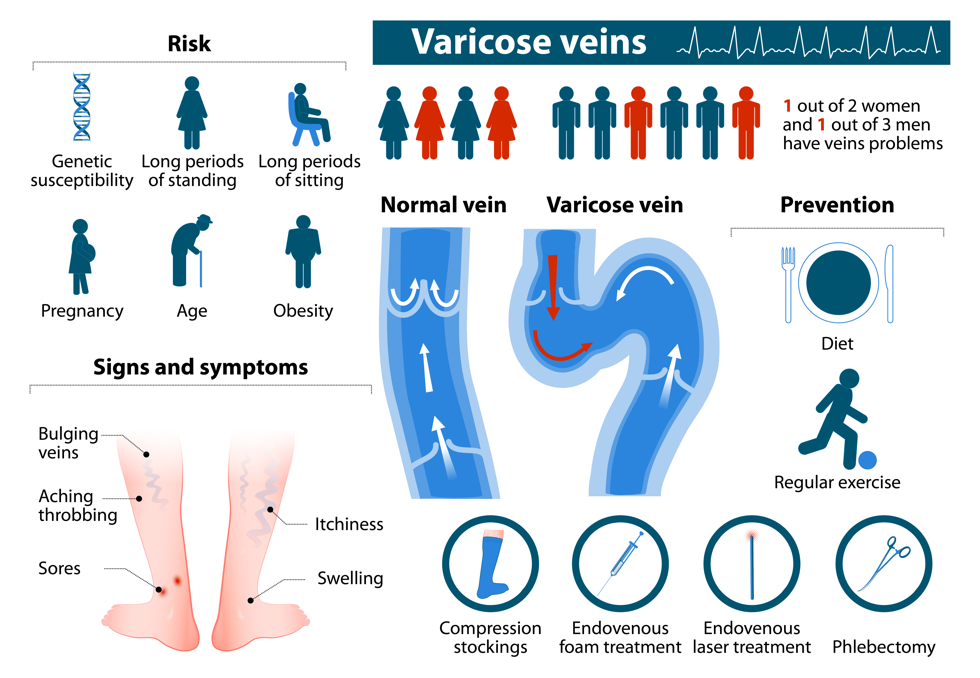
Photo Credit: Designua / Shutterstock
Are varicose veins dangerous?
Varicose veins are not usually dangerous. Although they can cause severe complications due to a limited blood flow. As such, it is wise to consult a doctor for diagnosis.
1. Chronic venous insufficiency
A restricted blood flow within your veins can disturb the way your skin passes oxygen, nutrients and waste through your blood. Chronic venous insufficiency happens when the disruption occurs over a long period of time.
Unfortunately, chronic venous insufficiency can also develop into other complications. For example, varicose eczema, lipodermatosclerosis and venous leg ulcers.
2. Blood Clots
Varicose veins increase your risk of blood clots. When these blood clots eventuate, they can cause a range of new issues to develop. For example, thrombophlebitis or deep vein thrombosis (which can lead to a serious condition called pulmonary embolism).
3. Bleeding
Another complication can be bleeding. This happens as a result of something, such as bumping your leg or a cut. Once the skin starts bleeding can be challenging to stop and may need medical attention.
Is treatment necessary for varicose veins?
Treatment is not always necessary for varicose veins. Treatment is recommended if the condition is causing you pain or discomfort. Equally, treatment may be desired for cosmetic reasons.
Is treatment necessary for varicose veins?
Five types of varicose veins treatments

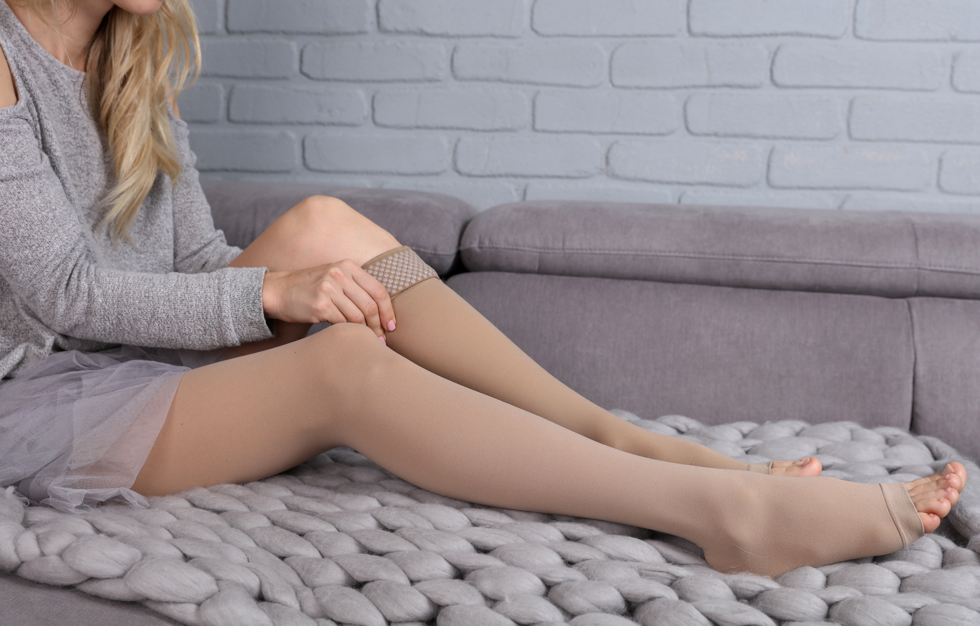
The purpose of compression stockings is to help the blood flow upward by placing pressure in carefully selected positions on your ankles and legs. The stockings will be tightest at your ankle, and the least amount of pressure will be applied in your thighs.
You can expect compression stockings to relieve some of the varicose vein symptoms. For example, leg pain, discomfort and swelling. However, they do not necessarily prevent new varicose veins from appearing. Neither do the stockings preempt the current varicose veins from getting worse.
The stockings come in various styles, colours and sizes. If the fit is incorrect, you can even request the stockings to be tailor made. Tights can also be bought, though this isn’t covered by the NHS. Compression stockings can feel uncomfortable, particularly in warm weather. Yet, the night hours is only time when the stockings can be removed.
The compression stockings are not recommended for long-term use. However, if you have deep venous incompetence, the stockings must be worn on a daily basis for the rest of your life.
2. Endothermal ablation
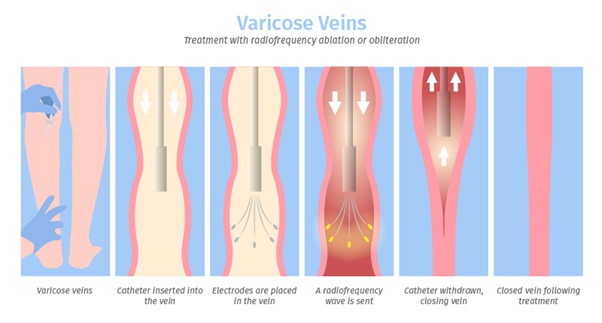
There are two different methods for endothermal ablation. However, both options have similar objectives and results. Both treatments can be completed under local or general anaesthetic.
The first option, radiofrequency ablation, uses a probe to send high-frequency radio waves to heat and seal the vein. As a result, the blood will be naturally diverted to use alternate veins throughout your body.
There are brief side effects from this procedure. However, they tend to be minimal. For example, pins and needles. The recovery process may require compression stockings for the subsequent weeks after having radiofrequency ablation.
The second method, endovenous laser treatment, uses lasers to insert short ruptures of energy and uses heat to close the affected varicose veins.
The side effects from endovenous laser treatment are more severe than the radiofrequency ablation. It can cause some tightness throughout your legs. Additional side effects include bruising and pain on the treated area. There is also a possibility that the procedure could cause temporal nerve damage.
3. Sclerotherapy Surgery
Sclerotherapy surgery is normally suggested on the premise that endothermal ablation is not appropriate for you. However, sclerotherapy may not be recommended if you have ever had deep vein thrombosis.
An ultrasound is used to guide the designated foam into your vein. This injection produces scarring on the veins to prevent blood from entering. The procedure is received while on a local anesthetic.
The veins will become less visible throughout the commencing weeks. While this happens, your healthy veins will allow the blood to flow properly.
It may take several rounds of surgery for this method to work. This procedure has reportedly produced an eighty-four per cent success rate, according to NICE. However, it is worth noting that another study revealed over half of patients find that the varicose veins reappear.
This varicose vein surgery recovery time is quick and straightforward. It’s likely that you will not need to take off any additional time from work or your daily routine as a result of the sclerotherapy surgery. Merely wear bandages or compression stockings for one week (sometimes less).
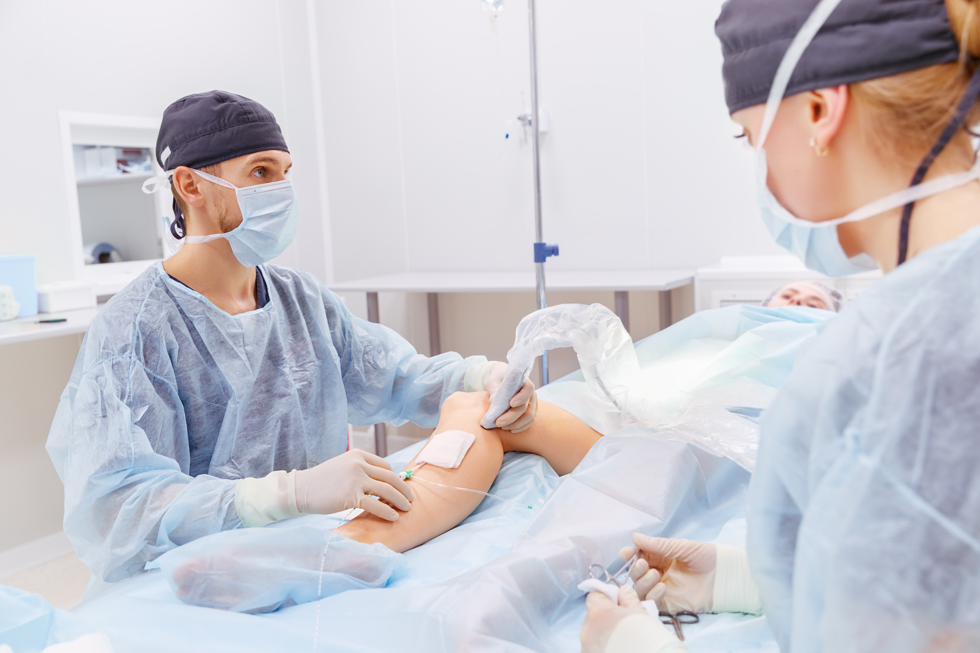
Photo: Evgeny Atamanenko / Shutterstock
Sclerotherapy surgery can cause an extensive number of symptoms compared to the prior varicose vein treatments. Varicose vein surgery complications for sclerotherapy include the following:
Temporary vision problems
Discoloured patches on treated areas of skin
Fainting
Blood clots
Headaches
Lower back pain
Strokes (rare)
Transient ischemic attacks (rare)
Ligation and stripping is a varicose vein removal technique which is frequently used by surgeons. The process requires tying off the affected vein and extracting the varicose veins.
As this surgery is more involved, it takes place while you are unconcious. As with the other surgeries, your other veins will act in place of the impaired vein.
You may need to set aside up to three weeks of varicose vein surgery recovery time after the ligation and stripping method. The recovery process could impact your ability to work. Additionally, compression stockings may be required for one week after the ligation and stripping surgery.
Symptoms may include bleeding, pain and bruising. Additional symptoms with heightened severity could include deep vein thrombosis or nerve damage.
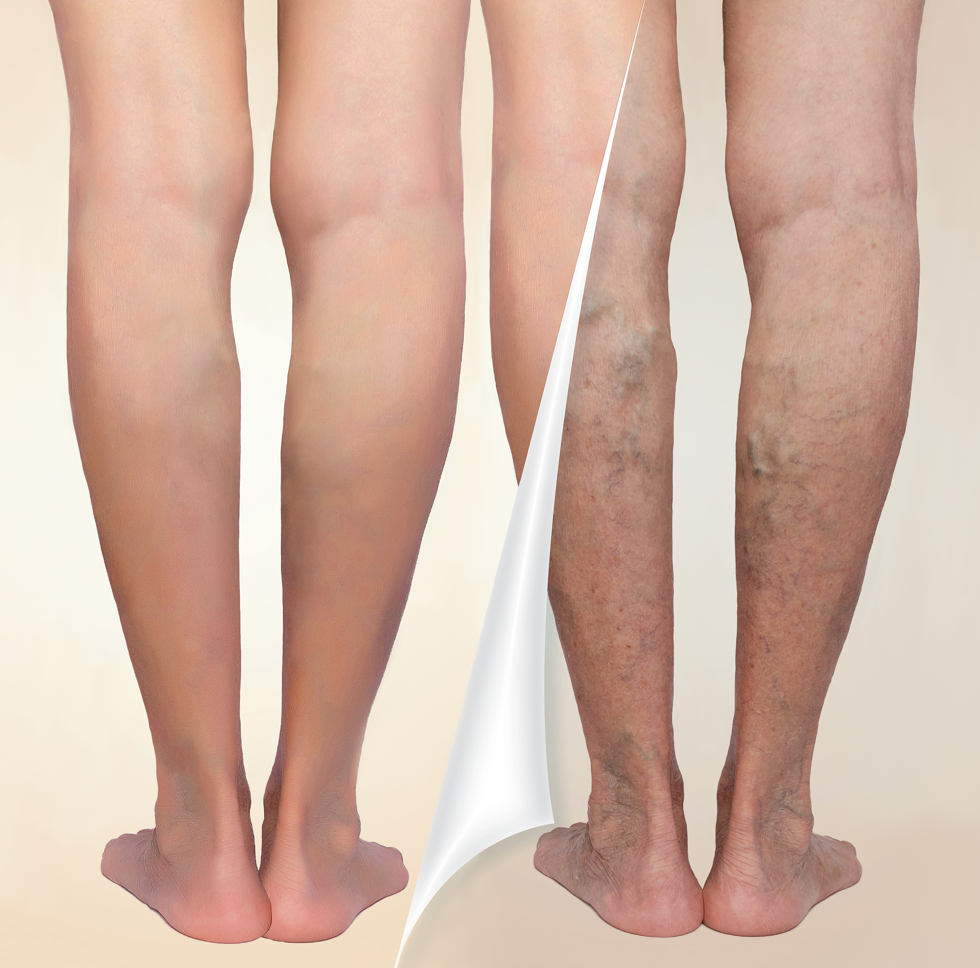
5. Transilluminated powered phlebectomy
As the transilluminated powered phlebectomy is a newer form of varicose vein treatment, there is a level of uncertainty regarding the results and risk factors.
This procedure can be undertaken while on local or general anaesthetic. The surgeon uses a specific light to ensure they target the right veins. The varicose veins are then cut and then extracted with a suction tool. The known side effects are bleeding and bruising, although this may not impact everyone.
Varicose vein symptoms, Are varicose veins dangerous, types of varicose veins treatments, varicose vein symptoms, Compression stockings, varicose vein surgery recovery time, Varicose vein surgery complications, varicose vein treatment.